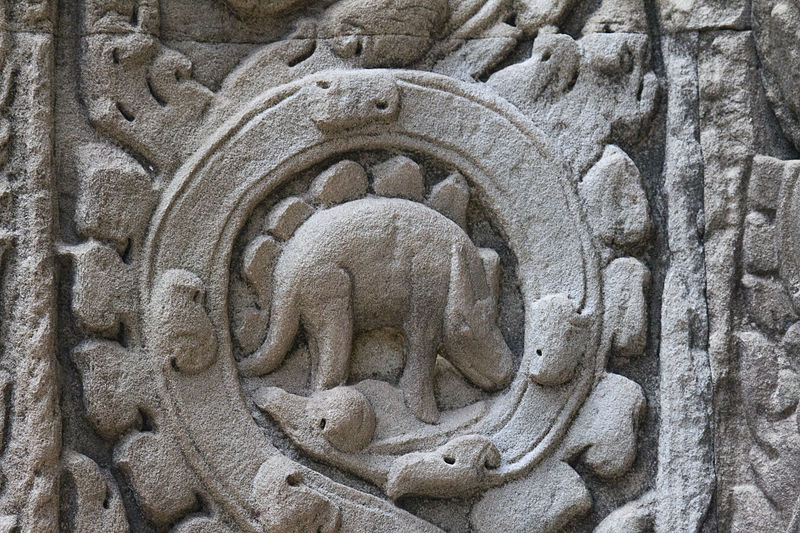
At Cambodia’s Ta Prohm temple, near Angkor Wat, visitors have noticed an unusual carving on a crumbling wall — it appears to resemble a stegosaur. Well, viewed from the right angle it does, and allowing for the large head, large ears, and horn. In fact, it better resembles a boar, a rhino, or a chameleon viewed against a leafy background.
Because the temple was built in the 12th century, some creationists have cited the carving as evidence that humans and dinosaurs once coexisted in the region. But it’s not even clear when the carving was made — the temple is a favorite spot for filmmakers, one of whom may have added it, or it may even be a deliberate hoax.
In any case, writes Smithsonian‘s Riley Black, “the temple carving can in no way be used as evidence that humans and non-avian dinosaurs coexisted. Fossils have inspired some myths, but close scrutiny of geological layers, reliable radiometric dating techniques, the lack of dinosaur fossils in strata younger than the Cretaceous, and other lines of evidence all confirm that non-avian dinosaurs became extinct tens of millions of years before there was any type of culture that could have recorded what they looked like.”
